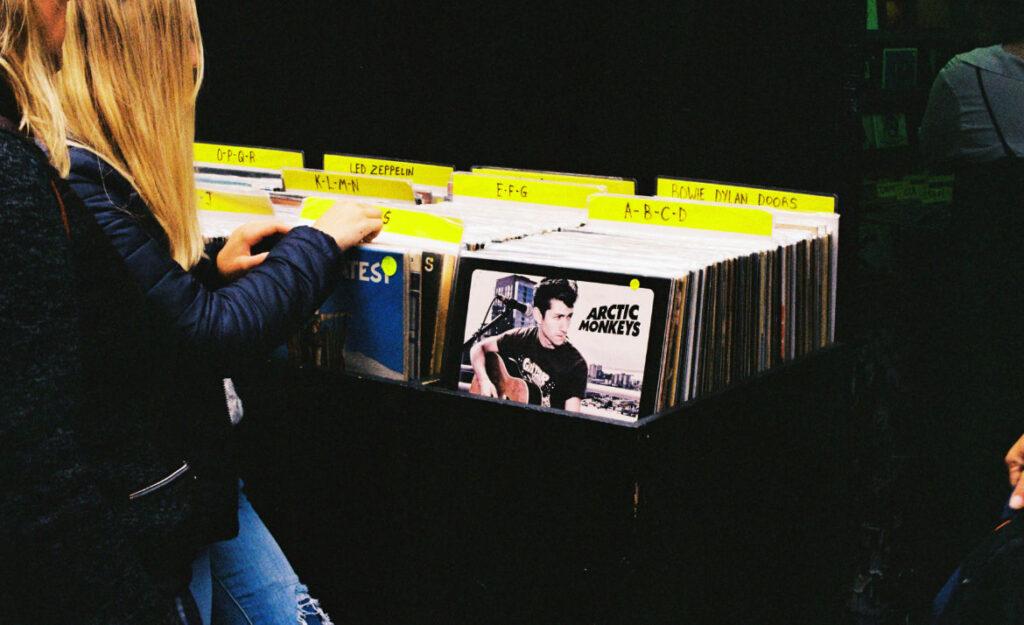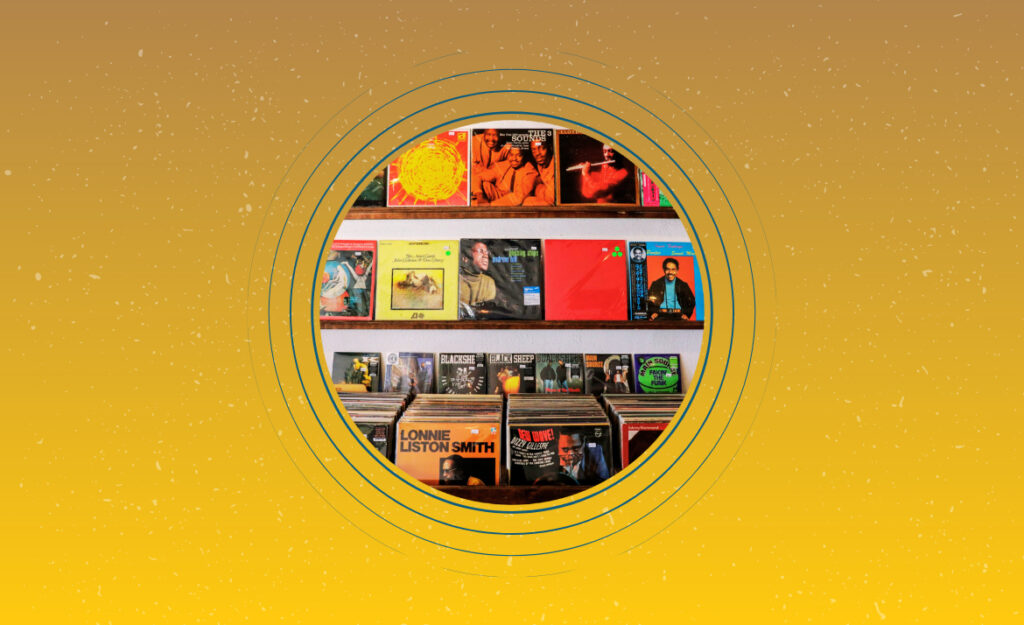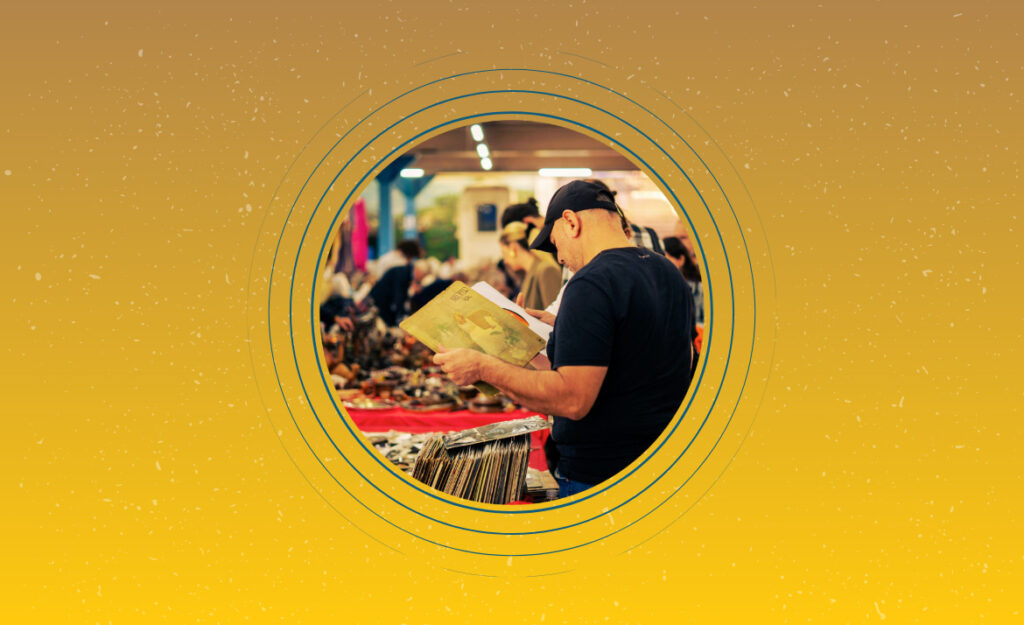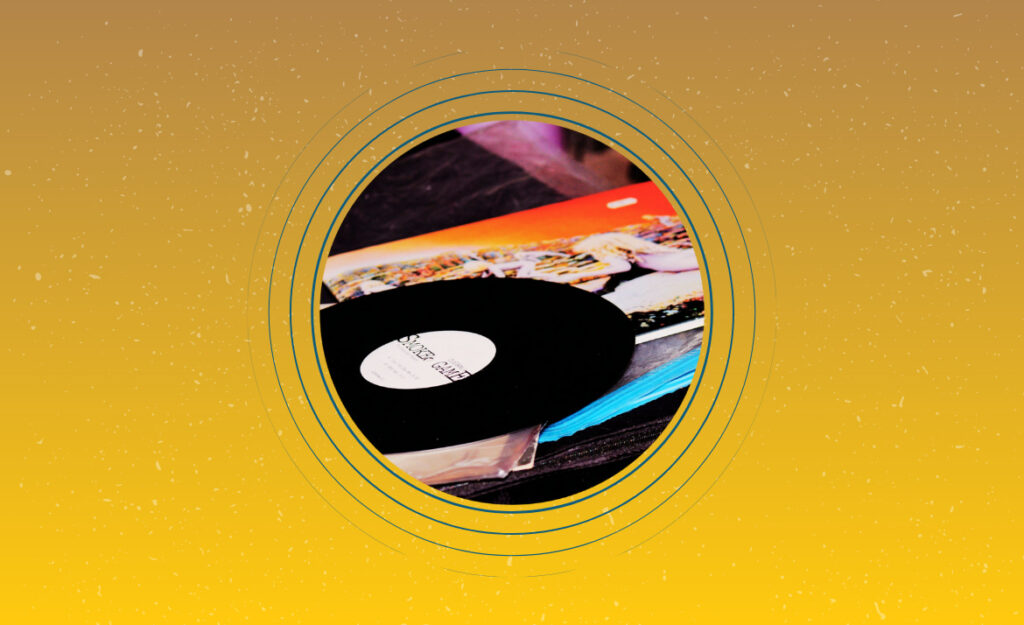
There’s a rush that comes from digging through crates and discovering a rare vinyl, but the excitement can fade fast if you realize you’ve landed a counterfeit. Navigating vinyl bootleg ethics means knowing what’s authentic and what crosses the line. These aren’t abstract concerns—they affect every collector’s trust in the hobby.
Counterfeit vinyl doesn’t just drain your wallet; it can muddy an artist’s legacy and degrade the integrity of collections. The stakes go beyond money when you factor in the community’s commitment to supporting creators and sustaining music culture. Understanding vinyl bootleg ethics gives collectors a compass for making responsible choices.
By the end of this guide, you’ll have hands-on methods to spot fakes, grasp the ethical landscape, and make collecting more rewarding. Let’s dive into the world of vinyl bootleg ethics and authentic collecting strategies.
Spotting Counterfeits: Reading the Physical Signs
You’ll learn to distinguish real records from fakes by examining physical details. Counterfeit vinyl often gives itself away through flaws and shortcuts that demand a closer look.
Experienced collectors check every inch of the record when they suspect a bootleg. Obvious signs include off-center labels, blurry fonts, and oddly shaped runout grooves. Run your fingers along the edges—cheaply pressed records sometimes feel rough or light.
Examining Labels and Sleeve Printing
The label tells a story—real labels have sharp print and correct colors, not faded or smeared text. Hold the sleeve to the light and look for clean, distinct lines. If the artwork appears pixelated or washed out, that’s a red flag.
Comparing known originals with suspicious pressings sharpens your eye for details. Legitimate labels use quality presses and colors that match official releases. If a record’s font differs even slightly, document it before buying.
A collector at a swap meet noticed a too-glossy label on a sought-after album. He tapped the surface, felt the wrong texture, and passed—avoiding what others later confirmed was a fake. Copy that diligence on your next hunt.
Evaluating Matrix and Runout Codes
Flipping a vinyl reveals matrix inscriptions near the label. Originals have engraved codes; counterfeits might be missing these, or worse, sport lazy hand-etched numbers without context. Snap a close-up photo and research known codes online.
A real example: someone found a rare soul pressing where the runout code was missing entirely. Cross-checking against online resources, they realized no authentic copy would omit this. They sent it back instantly—saving themselves future regret.
If you see “hand-written” numbers in sloppy scrawl or no code at all, step back and double-check. Runout codes serve as a vinyl’s fingerprint; never skip this step when collecting high-value records.
| Physical Feature | Authentic Vinyl | Counterfeit Vinyl | Action Step |
|---|---|---|---|
| Label Print | Sharp text, correct colors | Blurry lines, color bleed | Compare to verified original before buying |
| Sleeve Paper | Quality stock, artwork crisp | Thin, glossy, pixelated art | Hold to light, check texture and color depth |
| Runout Codes | Engraved, consistent with release | Missing or hand-etched, inconsistent | Photograph and research specific code online |
| Record Weight | Within standard range (120-200g) | Too light or uneven | Weigh record or compare feel to trusted pressing |
| Audio Quality | Clear, deep soundstage | Flat, muffled playback | Play sample track, listen for fidelity issues |
Trustworthy Buying: Protecting Yourself and Supporting Artists
Learning where to buy records gives you the power to support original artists and sidestep knock-offs. Stick to shops and websites with a proven reputation—these sellers usually value vinyl bootleg ethics as much as you do.
Before a purchase, check seller feedback and ask direct questions about provenance. High-quality sellers provide detailed photos, clear return policies, and specific answers about the record’s origin. That transparency is key for buyers committed to vinyl bootleg ethics.
Establishing a Seller Checklist
Good sellers check off several boxes: clear inventory descriptions, accurate grading, robust customer support, and experience dealing with rare or valuable records. Never hesitate to request extra photos or matrix code information before sealing the deal.
- Request high-resolution images: Genuine sellers supply clear, well-lit shots of the actual item—including runout codes and sleeve details—so you verify authenticity before purchase.
- Ask direct provenance questions: Messages like “What’s the history of this record?” prompt honest sellers to disclose origins, while fakes tend to draw vague replies, allowing you to walk away with confidence.
- Seek out verified shops: Look for stores linked to artist official websites or recognized record fairs. These establishments prioritize vinyl bootleg ethics and stand by the records they sell.
- Review seller ratings in detail: Detailed, consistent positive reviews signal trustworthiness. Read between the lines for mention of authenticity, quick returns, and responsive service.
- Verify return policies: If the seller balks at returns or limits scrutiny for high-ticket records, walk—responsible sellers allow returns and back up their goods with transparent policies.
Applying this checklist each time you buy for your collection keeps counterfeit records away, ensures support for the right channels, and upholds crucial vinyl bootleg ethics in the community.
Understanding the Role of Community Recommendations
Online forums and collector communities act like a neighborhood watch—members warn others about sellers known for questionable practices. Checking threads on Discogs, Reddit, or local Facebook groups yields real-world feedback and practical tips.
- Check blacklists and warning threads: Spot sellers flagged for suspicious listings—learning from other collectors saves time and money, reinforcing your skill at dodging fakes.
- Join trusted collector groups: Private forums and social media pages promote dealers with ironclad reputations, serving as an ongoing resource for ethical buying decisions.
- Share personal experiences: When you report scams or good finds, others benefit; the more info circulates, the harder it gets for counterfeiters to thrive in the vinyl market.
- Cross-reference price trends: Community databases provide current and historic pricing on rare records, making abnormally low deals on “mint” items easy to spot and avoid.
- Attend vinyl fairs with regulars: Going to events with experienced buyers offers hands-on lessons and safety in numbers. Their guidance is invaluable for learning practical vinyl bootleg ethics.
Active engagement in collector circles sharpens your fraud-detection instincts and turns your vinyl hobby into a sustainable, ethical pursuit. Every interaction, review, and tip protects the music you love.
Knowing the Ethical Boundaries: When Reissues Are Fair Game
Ethical boundaries aren’t always black and white. Sometimes, reissue pressings complicate the line between legal releases and bootlegs. Understanding these boundaries lets you enjoy more music without supporting counterfeits.
Collectors encounter reissues when original pressings are out of print. Many reissues respect vinyl bootleg ethics by sourcing from official masters and granting royalties to artists—knowing which is which helps you buy with confidence.
Distinguishing Official Reissues from Bootlegs
Official reissues emerge from partnerships with rights holders, featuring clear licensing info and credible distribution channels. Counterfeit reissues skip these steps, typically avoiding transparency or supporting artists. The difference is clear as reading the record’s spine for a legitimate label logo.
Take time to scan for catalog numbers, copyright marks, and barcodes that match a label’s authentic listings. If a “new” pressing lacks these markers, assume it’s a bootleg. Prioritize music that flows from authorized hands to your turntable.
A fellow collector noticed their new pressing included artist liner notes and correct artwork quality—both signs of an official reissue. If in doubt, write the label to confirm. That simple message upholds vinyl bootleg ethics.
Checklist: What Makes a Legit Reissue?
Run every record you consider through this checklist to protect yourself and the vinyl ecosystem.
- Check label affiliations: Confirm the pressing is from a recognized label known for securing rights and crediting original artists.
- Look for credible barcodes: Cross-reference the barcode against established discography databases—generics or mismatches frequently signal a bootleg release.
- Seek licensing info: Every licensed reissue spells out who cleared the music; no info—or ambiguous labels—point to ethical gray areas or outright counterfeits.
- Research distribution partners: Established distributors with brick-and-mortar shops are more trustworthy than anonymous online-only sellers with sparse details.
- Ask for artist involvement: Genuine reissues sometimes come with liner notes or artist interviews. If present, they show respect for vinyl bootleg ethics and creators alike.
Recognizing Red Flags in Listings and Descriptions
Deceptive listings do their best to hide counterfeit origins. Learn to read between the lines and catch subtle cues—those skills will elevate your collecting game and defend against common scams.
Real sellers love sharing stories about rare records; scammers stick to generic language, avoid matrix code photos, or list too-good-to-be-true pricing. Stay alert for descriptions that dodge details or use recycled images—these should raise alarms instantly.
Reading Seller Language for Clues
Expressions like “private pressing,” “import,” or “unofficial release” sometimes disguise bootlegs. Seasoned collectors steer clear of claims that cannot be verified, such as “from a warehouse find” without proof or explanation.
Count the absence of story or specifics as a warning. Honest sellers answer questions with enthusiasm and detail. If you encounter evasive answers, walk away. That discipline preserves vinyl bootleg ethics every time you buy.
Concrete example: a listing shows a rare funk album with a single, blurry photo, vague story, and generic placeholders in the description. Report, avoid, and flag for others—your vigilance strengthens the collecting network.
Evaluating Seller Response Behavior
Responsive sellers follow up promptly and offer to send extra photos or sound samples—it means they’re proud of their inventory and welcome scrutiny.
Imagine emailing, “Can you show a close-up of the runout?” A genuine shop replies with photos and context, while a shady one dodges or delays. Trust your gut—unsatisfying interactions signal more trouble ahead.
Friendliness, helpfulness, and detail-oriented messaging are signs of a seller who values vinyl bootleg ethics just as much as you do. Look for these traits before any money changes hands.
Protecting Your Collection from Unintentional Bootlegs
Your collection’s integrity depends on diligent recordkeeping and knowledge about vinyl bootleg ethics. Each album you archive should have its story and origin clearly marked to avoid future confusion or doubt.
When you buy used vinyl or inherit records, pause to review their provenance. Taking photos of runout codes, labels, and sleeves right away creates a reference library for future trading or selling decisions—ensuring only authentic records cycle through your stacks.
Documenting the Journey of Each Record
Analogies work well: treat your vinyl like family heirlooms. You wouldn’t pass down items with unknown origins, so don’t let mystery records linger unexamined in your crates. Keep a digital log for each piece, including purchase history and notable features.
If you suspect a bootleg slipped into your collection, make a note and store it separately. Documenting these helps you stay transparent during trades and teaches others what to look for. This habit preserves vinyl bootleg ethics and supports honest collecting.
Experienced collectors sometimes discover old purchases were fakes only after refining their eye. They add warning notes attached to those records—instantly identifying which shouldn’t be sold or traded as originals. Copy this practical method to avoid spreading counterfeits.
Building Awareness and Advocacy in Collector Communities
Every collector plays a part in raising standards. Sharing what you’ve learned about vinyl bootleg ethics empowers newer hobbyists and discourages shady sellers. Advocacy succeeds when individuals contribute consistent, practical tips and support to the community.
Forums and local clubs benefit from transparency—start threads about suspect finds or review weekend market experiences. Spotlighting records with questionable provenance helps others avoid pitfalls while promoting collective vigilance for authentic collecting.
Empowering Others with Tools and Resources
List favorite tools for researching releases, like online discographies, databases, and barcode check sites. Share guides for identifying official reissues or explain how to speak with label reps about authenticity—making these resources public boosts confidence and independence for all collectors.
Imagine mentoring someone who’s frustrated after buying a counterfeit. Walk them through checking codes, referencing tables, and posting experiences to networks. It not only solves their problem but also strengthens your reputation as someone firmly rooted in vinyl bootleg ethics.
Consistently sharing resources and stories in your community supports the ongoing fight against counterfeits, making the hobby more welcoming for everyone.
Final Thoughts on Ethical Collecting in the Vinyl World
Protecting your vinyl journey starts with a deep understanding of vinyl bootleg ethics. Every record you acquire, inspect, and share weaves into the fabric of an ethical collector culture that values authenticity and respect for artists.
The power to avoid bootlegs lies not only in sharp eyes but also in open advocacy. Every step you take—checking codes, sharing knowledge, and documenting provenance—preserves the trust and joy at the heart of vinyl collecting.
Continue to question, research, and connect with fellow collectors. Encouraging transparent dialogue about vinyl bootleg ethics secures not just your collection, but also the music and memories for future generations.



